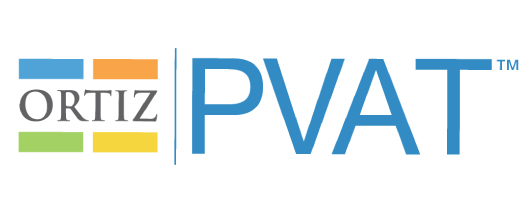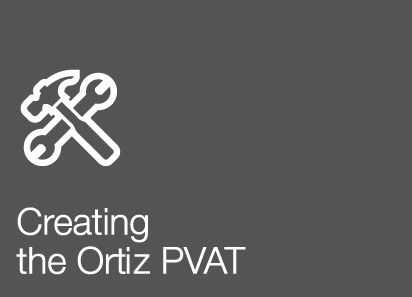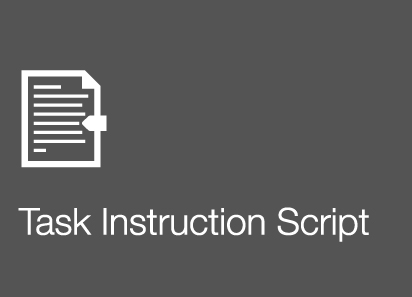- Technical Manual
- Chapter 1: Introduction
- Chapter 2: Theory and Background
- Chapter 3: Administration and Scoring
- Chapter 4: Scores and Interpretation
- Chapter 5: Case Studies
- Overview
- Case Study 1: Clinical Evaluation of an English Speaker Suspected of Having a Speech-Language Impairment
- Case Study 2: Progress Monitoring of an English Learner with Suspected Deficits in Verbal Ability and Language
- Case Study 3: Psychoeducational Evaluation of an English Learner with Suspected Specific Learning Disability
- Chapter 6: Development
- Chapter 7: Standardization
- Chapter 8: Test Standards: Reliability, Validity, and Fairness
- Task Instructions Scripts
General Administration Guidelines |
Age Range
The Ortiz PVAT is intended for individuals between the ages of 2 years 6 months and 22 years 11 months and should not be administered to those who are beyond the specified age range.
Administration Time
Administration time is approximately 10–15 minutes, but it can vary depending on the examinee’s ability level (i.e., examinees with low English receptive vocabulary acquisition may reach their ceiling faster and thus the administration time will be shorter, while the reverse may be true for examinees with high acquisition). The test automatically stops when the examinee has reached their ceiling, which is defined as five errors in ten consecutive items (see Final Test Construction in chapter 6, Development, for more details on the determination of the Ortiz PVAT ceiling rules). The Ortiz PVAT is not a timed test of vocabulary, and reaction time is not a factor in determining an examinee’s score; therefore, the examinee should be given as much time as needed to consider their answer for each item. However, to keep the examinee engaged, the examiner should encourage the examinee to give a response if the examinee has not provided a response in approximately 10–15 seconds (refer to Step 7: Administer the Assessment in this chapter for more details).
Administration Device Options
The Ortiz PVAT can be administered on a desktop, laptop, or tablet (refer to Hardware and Software Requirements later in this chapter for specific criteria required to access the testing, scoring, and reporting features). Regardless of the device used, it is critical that the audio component of the assessment is clear and comprehensible; therefore, devices with built-in (or external) speakers are recommended so that the examinee can hear the auditory presentation of target words at an optimal volume (see details on the presentation of audio stimuli later in this chapter in the Preparing for the Administration section for more information). In cases where the examinee presents unique physical visual and/or auditory challenges, the examiner must use their clinical judgment to determine if the Ortiz PVAT is a suitable measure for the examinee.
Input Device Options
Examinees can use a computer mouse, the touchpad on a laptop, or a touchscreen to select the picture that represents the word they just heard. It is permissible for the examinee to switch from one input device to another (e.g., from touchscreen to mouse) during the assessment if they are having trouble with the original input method. If the respondent is using a computer mouse as the input device, ask whether they are more comfortable left- or right-clicking and adjust the pointing device settings accordingly.
Administration Settings
The Ortiz PVAT should be administered on an individual basis, ideally in a formal testing or assessment environment. The assessment must be completed in person and in a quiet location without distraction (e.g., toys, television, or people walking by). The examiner is required to provide the examinee with one-on-one attention for the entire duration of the test. There should be appropriate seating for both the examiner and the examinee in front of the computer screen. The examiner should be available to assist with inputting responses if the examinee has limited motor skills to control the input device, or to re-orient the examinee if they disengage from the task (see Administration Procedure later in this chapter for more details). The examiner should ensure that the room has adequate lighting and that the screen is easy to view.
Ethical and Legal Guidelines
Speech-language and psychological test professionals are generally guided by specific ethical and legal principles such as the Preferred Practice Patterns for the Profession of Speech-Language Pathology published by the American Speech-Language Hearing Association (2004). The standards described in this section represent good practice and should be followed, regardless of an evaluator’s particular background or type of licensure/certification. These good practice guidelines include obtaining informed consent from the respondent, ensuring confidentiality of the results, debriefing the examinee, and complying with intellectual property and copyright laws.
The process of obtaining informed consent begins by explaining to the examinee the general purpose of the assessment, including the reason they are being asked to complete the Ortiz PVAT. In most settings, the examinee must be informed of any limits to confidentiality and of the efforts the examiner will take to protect confidential information. The examinee must also be instructed that they have the right to stop the administration at any time for any reason (consistent with the ethical standard of “freedom to withdraw”) and be informed of the consequences of this choice and any alternative options. Obtaining informed consent means that the examinee agrees to complete the assessment without being forced to do so, understands what the task involves (i.e., respond to computerized stimuli), and comprehends how the results will be used. Legally, consent can only be obtained from an adult, whereas a child can provide assent. Assent is agreement from a youth to participate and must be obtained in addition to consent from their parent/guardian. Although assent has questionable legal basis, it is important from both ethical and psychological perspectives.
Confidentiality is often addressed as part of the informed consent discussion and should include information about two main issues: protecting information about the examinee, and protecting the privacy of the examinee’s answers. The examiner must be honest about who will have access to the results of the assessment and the purpose or goal for which the results will be used. The examinee should be informed about the measures that will be taken to keep the information confidential (e.g., printed reports will be kept in a locked file cabinet, assessment data will be stored in a password protected computer on a secure server).
Examinees should be debriefed at the end of each administration, during which they are to be reminded of the reason for completing the Ortiz PVAT and informed of when the results and recommendations will be provided. The examiner should answer any questions and address any concerns that the examinee may have about the administration.
The Ortiz PVAT is a copyrighted assessment and it cannot be reproduced without the explicit written permission of the publisher. The Ortiz PVAT is also a regulated test that is in accordance with the ethical and professional standards outlined in the Standards for Educational and Psychological Testing jointly developed by the American Educational Research Association, the American Psychological Association, and the National Council on Measurement in Education (AERA, APA, & NCME, 2014); therefore, the use and interpretation of results is restricted to qualified professionals (see Users and User Qualifications in chapter 1, Introduction, for more information). All printed Ortiz PVAT records should be retained in a confidential and secure location as long as required by any applicable laws or regulations (see the Data Security section later in this chapter for details regarding the storage of online test data). Laws such as the United States’ Health Insurance Probability and Accountability Act (HIPAA; 1996) and the Canadian Personal Information Protection and Electronic Documents Act (PIPEDA; 2000) require that individuals have access to the personal information contained in their files. Additionally, a file may be subpoenaed for a legal proceeding. It can be difficult to know how to provide the legally required information while maintaining copyright protection and security of test materials. It is recommended that local laws and regulations be followed for the appropriate storage and release of personal information, test materials, and results. Please refer to the MHS Test Disclosure Policy, which includes recommendations for best practices regarding client access to test results and the release of test materials under legal and ethical obligations.
| << Overview | Administration Procedure >> |





